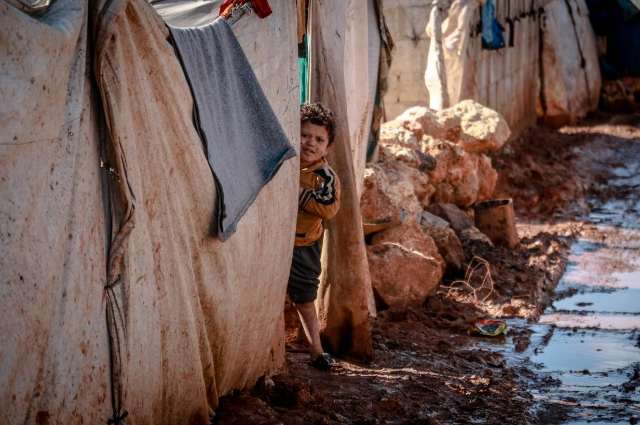
Photo by Ahmed akacha
Introduction
Migration is a global phenomenon that has been happening for centuries. People migrate for a variety of reasons, including economic opportunities, political instability, and natural disasters. Migration can have a significant impact on the lives of migrants and the societies they move to. International migration law is a body of law that governs the movement of people across borders. This law is designed to protect the rights of migrants and to ensure that they are treated fairly. Refugee law is a specific type of international migration law that deals with the protection of people who have been forced to flee their homes due to persecution or war. The rights of migrants are protected by a number of international treaties, including the Universal Declaration of Human Rights, the International Covenant on Civil and Political Rights, and the International Covenant on Economic, Social and Cultural Rights. These treaties guarantee the right to freedom of movement, the right to work, the right to education, and the right to health care. The challenges faced by migrants are many and varied. These challenges include discrimination, exploitation, and violence. Migrants may also face difficulties in accessing education, employment, and housing.
The role of the international community in protecting the rights of migrants is crucial. The international community can help to protect the rights of migrants by providing financial assistance to countries that host large numbers of migrants, by promoting the rule of law, and by working to combat discrimination and violence against migrants. The future of international migration law and refugee human rights is uncertain. The number of people displaced by conflict and persecution is increasing, and the international community is struggling to find ways to meet the needs of these people. However, the international community has a responsibility to protect the rights of migrants and refugees, and it is important to continue to work towards this goal.
In addition to the challenges mentioned above, migrants and refugees also face a number of other challenges, including:
- Language barriers
- Cultural differences
- Lack of access to healthcare
- Lack of access to education
- Lack of access to employment
- Discrimination and xenophobia
Despite these challenges, many migrants and refugees are able to rebuild their lives and contribute to their new communities. They bring with them skills, knowledge, and experiences that can enrich the lives of everyone they meet.
What is Migration?
Migration is the movement of people from one place to another, either within a country or across international borders. Migration can be voluntary or involuntary, and it can be short-term or long-term. There are many reasons why people migrate. Some people migrate in search of better economic opportunities, while others migrate to escape war or persecution. Some people migrate to be with family or friends, while others migrate to explore new cultures. Migration can have a significant impact on the lives of migrants and the societies they move to. Migrants can bring new skills, knowledge, and experiences to their new communities. They can also contribute to the economy by filling labor shortages and starting businesses. However, migration can also pose challenges for migrants and the societies they move to. Migrants may face discrimination, exploitation, and violence. They may also face difficulties in accessing education, employment, and housing.
There are many different types of migration. Some of the most common types of migration include:

- Internal migration: This is the movement of people within a country. Internal migration can be caused by a variety of factors, including economic opportunities, natural disasters, and conflict.
- International migration: This is the movement of people across international borders. International migration can be caused by a variety of factors, including economic opportunities, political instability, and natural disasters.
- Refugee migration: This is the movement of people who have been forced to flee their homes due to persecution or war. Refugees are protected by international law, and they have the right to seek asylum in another country.
- Irregular migration: This is the movement of people who do not have the legal right to enter or remain in a country. Irregular migrants are often referred to as "illegal immigrants."
The Impact of Migration
Migration can have a significant impact on the lives of migrants and the societies they move to. Some of the positive impacts of migration is that Migrants can contribute to economic growth by filling labour shortages and starting businesses. They can bring new skills, knowledge, and experiences to their new communities. This can help to create a more vibrant and diverse society. They are often more entrepreneurial than native-born populations. This can lead to new businesses and new ideas.
Migrants may face discrimination in the workplace, in housing, and in other areas of life. They may be exploited by employers who pay them low wages or who force them to work in dangerous conditions. Migrants may be the victims of violence, including hate crimes and human trafficking. The international community can provide financial assistance to countries that host large numbers of migrants. This assistance can be used to provide migrants with food, shelter, education, and healthcare. They must also promote the rule of law in countries that host large numbers of migrants. This can help to protect migrants from discrimination, exploitation, and violence. Everyone must work to combat discrimination and violence against migrants. This can be done through education, awareness-raising, and legal reform. The international community has a long way to go in terms of protecting the rights of migrants and refugees. However, there is a growing recognition that migration is a global issue that requires a global solution. By working together, homo sapiens can create a more just and equitable world for all.
International Migration Law
International migration law is a body of law that governs the movement of people across borders. This law is designed to protect the rights of migrants and to ensure that they are treated fairly. The history of international migration law can be traced back to the early 19th century. In 1826, the United Kingdom passed the Passenger Act, which was the first law to regulate the movement of people across international borders. In 1864, the International Committee of the Red Cross (ICRC) was founded to protect the rights of war victims, including refugees. In the early 20th century, there was a growing recognition that international migration was a global issue that required a global solution. In 1921, the League of Nations adopted the International
Convention on the Status of Refugees, which was the first international treaty to protect the rights of refugees. After World War II, the United Nations (UN) took over the leadership role in developing international migration law. In 1951, the UN adopted the Convention relating to the Status of Refugees, which is the most important international treaty on refugee protection. The Convention has been ratified by 149 countries.

Photo by Sora Shimazaki
In 1990, the UN adopted the International Convention on the Protection of the Rights of All Migrant Workers and Members of Their Families. This Convention is the first international treaty to protect the rights of all migrants, regardless of their legal status. The Convention has been ratified by 48 countries. International migration law is a complex and evolving body of law. There are many different treaties and conventions that govern the movement of people across borders. These treaties and conventions are often interpreted differently by different countries. The international community is working to develop a more comprehensive and coherent system of international migration law. This is a complex and challenging task, but it is essential to ensure that the rights of migrants are protected.
There are many challenges to the implementation of international migration law.
Some of the most common challenges include:
- Lack of ratification: Many countries have not ratified the major international treaties on migration. This means that these countries are not legally bound to uphold the rights of migrants.
- Lack of enforcement: Even in countries that have ratified the major international treaties on migration, the laws are often not enforced. This can lead to discrimination, exploitation, and violence against migrants.
- Political will: There is often a lack of political will to implement international migration law. This is because migration can be a controversial issue, and governments are often reluctant to take steps that could be seen as favoring migrants.
- Despite the challenges, there are a number of things that can be done to improve the implementation of international migration law. Some of the most important things that can be done include:
- Raising awareness: It is important to raise awareness of the rights of migrants and the importance of implementing international migration law. This can be done through education, awareness-raising campaigns, and media outreach.
- Supporting ratification: It is important to support the ratification of the major international treaties on migration by countries that have not yet done so. This can be done through advocacy, lobbying, and financial support.
- Monitoring compliance: It is important to monitor compliance with international migration law by countries that have ratified the major treaties. This can be done through the work of human rights organizations, the UN, and other international bodies.
- Strengthening enforcement: It is important to strengthen enforcement of international migration law in countries that have ratified the major treaties. This can be done through training for law enforcement officials, the development of new policies and procedures, and the provision of resources.
Broder Legal Framework
Migration and refuge are intricate phenomena that require a robust international legal framework to safeguard the rights and well-being of migrants and refugees. At the core of the international legal framework lies the Universal Declaration of Human Rights. This seminal document enshrines the principles of inherent human dignity and equality, providing a solid foundation for the protection of migrants and refugees. Article 14 of the Declaration specifically recognizes the right to seek asylum, emphasizing its relevance to migration and refuge.

Photo by Sora Shimazaki
The 1951 Refugee Convention, complemented by its 1967 Protocol, represents a fundamental pillar of refugee protection. This Convention provides a clear definition of the term "refugee" and outlines the rights and obligations associated with refugee status. Of paramount importance is the principle of non-refoulement, which prohibits the return of refugees to territories where they may face persecution or serious harm.
However, as migration and refuge continue to evolve, there is a pressing need to update and enhance the Convention to address contemporary challenges adequately.
A network of international human rights treaties plays a vital role in protecting the rights of migrants and refugees. Treaties such as the International Covenant on Civil and Political Rights and the International Covenant on Economic, Social, and Cultural Rights guarantee a range of rights, including the right to life, liberty, security of person, work, and education. It is essential to recognize the intersection between these human rights treaties and the refugee protection framework, emphasizing the broader human rights dimensions of migration and refuge.
At the heart of refugee protection lies the principle of non-refoulement, which serves to safeguard individuals from being returned to situations where they may face persecution or serious harm. The principle has evolved as a cornerstone of international law, widely recognized as a customary norm and an erga omnes obligation. Upholding non-refoulement is a critical responsibility for states, though challenges arise in its practical application, particularly concerning extraterritoriality and interception measures. Additionally, regional and bilateral agreements further contribute to establishing complementary mechanisms for non-refoulement, although their interpretation and implementation may vary across regions and countries.
The Role of International Organizations
International organizations play a crucial role in advancing the protection of migrants and refugees. The United Nations High Commissioner for Refugees (UNHCR) carries the mandate of protecting refugees and asylum-seekers, providing assistance and facilitating durable solutions. Working closely with states, the UNHCR advocates for the rights and well-being of refugees on the global stage. The International Organization for Migration (IOM) focuses on migration management, including policy development, research, and assistance in voluntary return and reintegration of migrants. Collaboration between these organizations, alongside other international bodies, is vital to enhance cooperation and ensure effective protection and assistance for migrants and refugees. However, coordination challenges, limited funding, and the dynamic nature of migration present significant obstacles to their efforts.

Photo by EKATERINA BOLOVTSOVA from Pexels
While the international legal framework provides essential protections, it is not without its challenges and limitations. Legal loopholes and protection gaps persist, particularly with outdated definitions and criteria for refugee status determination. Furthermore, inconsistencies in national implementation of legal standards contribute to disparities in refugee protection. Limited access to legal channels for safe and regular migration exacerbates the vulnerabilities of migrants and refugees. Additionally, the non-binding nature of certain instruments poses challenges in terms of enforcement and accountability. Thus, there is an urgent need to address these shortcomings and develop a comprehensive and coherent legal framework that reflects the evolving complexities of migration and refuge in contemporary society.
Refugee Protection and Asylum
According to the 1951 Refugee Convention, a refugee is someone who has a wellfounded fear of being persecuted for reasons of race, religion, nationality, political opinion, or membership in a particular social group. This definition has been widely adopted and serves as the basis for determining refugee status. Central to the refugee definition is the concept of a well-founded fear of persecution. To establish refugee status, individuals must demonstrate a genuine fear of persecution in their home country. This fear must be objectively justified based on credible evidence, including past persecution or a well-documented risk of future harm. Assessing the validity of this fear is a crucial aspect of the refugee status determination process.
The process of determining refugee status involves thorough examination and assessment by competent authorities. It typically includes interviews, documentary evidence, and expert analysis. Governments, international organizations, and NGOs all play essential roles in conducting these assessments. However, the effectiveness and consistency of refugee status determination can vary between countries, leading to disparities in recognition rates and protection outcomes.
The asylum process faces numerous challenges and gaps that impact the protection of refugees. These include:
- Backlogs and Delays: Overwhelmed asylum systems in many countries result in significant backlogs and lengthy waiting periods, leaving refugees in precarious situations and exacerbating their vulnerability.
- Access to Fair and Efficient Procedures: Ensuring access to fair and efficient asylum procedures is critical. This includes providing legal representation, interpretation services, and safeguards against arbitrary detention.
- Inconsistent Recognition Rates: The varying interpretation and application of refugee law among different jurisdictions can lead to significant discrepancies in recognition rates, affecting the protection outcomes for refugees.
- Lack of Burden-Sharing: The burden of refugee protection often falls on a limited number of countries, straining their resources and capacity. Achieving more equitable burden-sharing is crucial to ensure that refugees are afforded protection and support.
While not all individuals may meet the strict definition of a refugee, they may still require protection due to other forms of serious harm. Complementary protection mechanisms, present in many national legal frameworks, provide protection to individuals who face risks such as torture, cruel treatment, or arbitrary deprivation of life if returned to their home country. Additionally, temporary refuge arrangements can be established in response to specific crises or emergencies, providing immediate protection to those in need until a durable solution can be found.
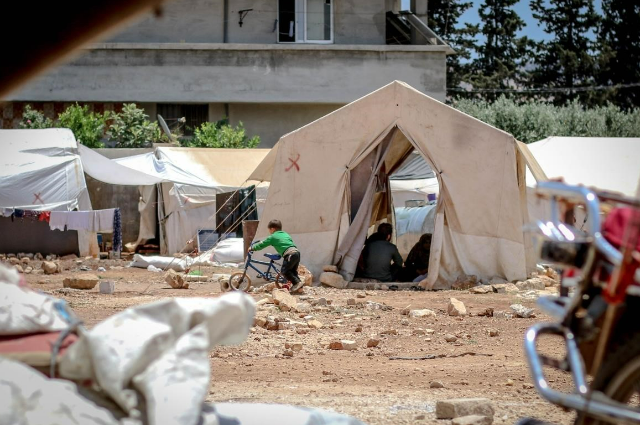
Photo by Ahmed akacha
Addressing the challenges and gaps within the asylum system is crucial to ensure that refugees receive adequate protection and support. Furthermore, recognizing complementary forms of protection and establishing temporary refuge arrangements can expand avenues for safeguarding the rights and well-being of individuals who may not fit the strict refugee definition. By addressing these issues, societies can demonstrate their commitment to upholding humanitarian values and fulfilling their obligations to protect those fleeing persecution and violence.
Forced Displacement and Refugee Crises
Forced displacement occurs when individuals are compelled to leave their homes due to persecution, conflict, violence, or human rights abuses. It results in profound humanitarian consequences, including the loss of lives, destruction of communities, and the displacement of millions. The consequences of forced displacement extend beyond the immediate humanitarian crisis, impacting host communities, straining resources, and exacerbating social and economic vulnerabilities. It is imperative to understand the root causes of forced displacement, such as conflict, political instability, and climate change, to develop effective strategies for addressing the issue.
The international legal framework plays a crucial role in protecting and assisting refugees. The 1951 Refugee Convention and its 1967 Protocol provide the foundation for the protection of refugees and outline the rights and responsibilities of states. The principle of non-refoulement, which prohibits, as we discussed earlier, the return of refugees to situations where they may face persecution or serious harm, is a cornerstone of this framework. Furthermore, regional agreements and customary international law contribute to the protection of refugees. However, challenges remain in ensuring the consistent and effective implementation of these legal instruments.
Humanitarian response is essential in addressing the immediate needs of forcibly displaced populations. International organizations, including the United Nations High Commissioner for Refugees (UNHCR) and humanitarian agencies, provide lifesaving assistance, such as shelter, food, healthcare, and education, to refugees in displacement situations. Collaboration between host countries, donors, and humanitarian actors is crucial for the provision of timely and effective aid. The protection of refugees extends beyond meeting their basic needs, encompassing their safety, security, and access to justice.
Finding durable solutions for refugees is a critical aspect of addressing forced displacement. These solutions include voluntary repatriation, local integration, and resettlement to third countries. Voluntary repatriation allows refugees to return to their home countries when conditions permit. Local integration involves facilitating the social, economic, and legal inclusion of refugees into the host communities. Resettlement provides an opportunity for refugees to start a new life in a third country when they cannot safely return home or locally integrate. Achieving durable solutions requires international cooperation, resource mobilization, and addressing the root causes of displacement. Addressing forced displacement involves navigating complex political and socio-economic challenges. This includes promoting peace and stability, addressing the underlying causes of displacement, and engaging in diplomatic efforts to resolve conflicts. Socio-economic challenges, such as limited resources, strain on infrastructure, and competition for jobs, can create tensions between host communities and refugees. It is crucial to develop strategies that promote social cohesion, support local communities, and ensure equitable access to resources and opportunities.
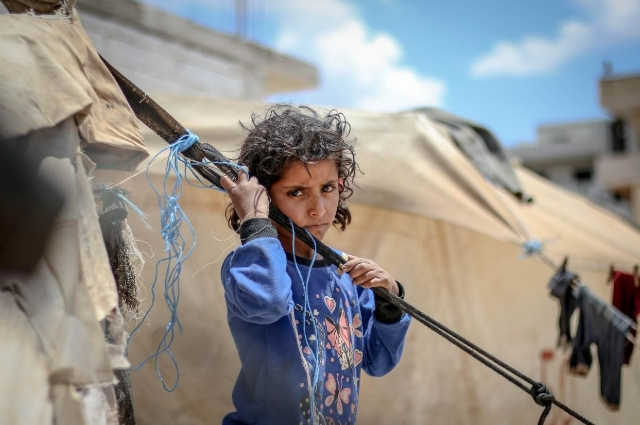
Photo by Ahmed akacha
It also necessitates international cooperation and burden-sharing. No single country or organization can tackle the challenges alone. Sharing responsibilities, resources, and expertise among host countries, donor nations, international organizations, civil society, and the private sector is essential for comprehensive and sustainable solutions. Enhanced cooperation can lead to equitable distribution of responsibilities and better outcomes for refugees and host communities alike.
By understanding the causes and consequences of forced displacement, implementing and strengthening the international legal framework, and pursuing comprehensive strategies, we can strive towards finding durable solutions and ensuring the protection and well-being of refugees. International cooperation, political commitment, and collaboration between all stakeholders are paramount in addressing the complex challenges associated with forced displacement and building a more inclusive and compassionate world for refugees.
Migration Management and Integration
By exploring policy frameworks, practical measures, and the importance of social cohesion, we try to highlight the need for comprehensive approaches that prioritize the rights and well-being of migrants and contribute to inclusive societies. Managing migration flows involves developing policies and mechanisms that address various dimensions of migration, including labor migration, family reunification, and forced displacement. Governments play a crucial role in formulating migration policies that balance national interests with the rights and needs of migrants. Effective management requires coordination among multiple stakeholders, such as government agencies, international organizations, civil society, and private sector actors. Central to migration management is the imperative to ensure orderly and safe migration. This entails establishing legal channels for regular migration, enhancing border management, combating human trafficking and smuggling, and providing access to legal protection and assistance for migrants. By promoting regular migration pathways, governments can reduce the reliance on irregular migration and minimize the risks faced by migrants, including exploitation, abuse, and hazardous journeys.
Integration is a dynamic process that involves the full participation and inclusion of migrants in social, economic, and cultural aspects of host communities. It requires the recognition and protection of migrants' rights, access to education, healthcare, employment, and social services, as well as fostering intercultural dialogue and combating discrimination. Successful integration benefits both migrants and host societies by promoting social cohesion, economic development, and cultural diversity. To facilitate migrant integration, governments need to develop comprehensive policy frameworks that provide a supportive environment for migrants to thrive. These frameworks should encompass a range of measures, such as language and skills training, recognition of qualifications, access to affordable housing, and targeted social inclusion programs. Integration policies should also address the specific needs of vulnerable groups, such as women, children, refugees, and migrants with disabilities. Building social cohesion is essential for the successful integration of migrants. It requires efforts to foster mutual understanding, respect, and solidarity among diverse communities. Community engagement and dialogue play a crucial role in breaking down stereotypes, combating xenophobia, and promoting inclusive societies. Civil society organizations, local communities, and religious institutions can contribute significantly to these efforts by facilitating interaction and promoting positive narratives about migration.
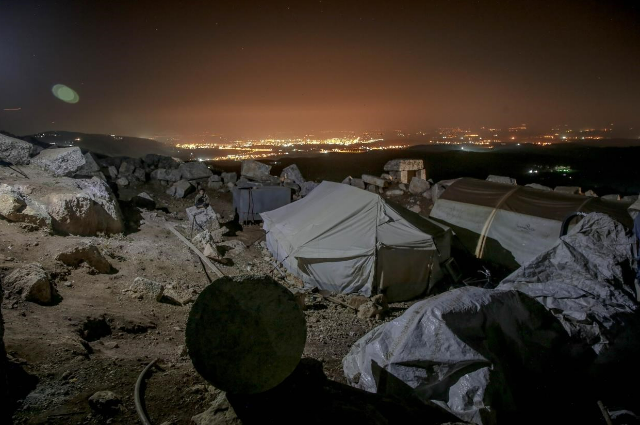
Photo by Ahmed akacha
By addressing the obstacles through evidence-based policies, promoting dialogue, and fostering inclusive societies, governments and stakeholders can create environments that harness the potential of migration and promote social cohesion. Also by prioritizing orderly and safe migration, developing comprehensive integration policies, and fostering social cohesion, governments can maximize the benefits of migration while safeguarding the rights and well-being of migrants. Embracing the opportunities presented by migration and recognizing the contributions we can build a better world.
Conclusion
Migration and refuge are profound and intricate phenomena that have significant implications for individuals, societies, and the global community as a whole. This article has provided a short exploration of migration and refuge from an international legal perspective, shedding light on the complexities, challenges, and opportunities inherent in these topics. Throughout the article, we have examined the international legal framework governing migration and refuge, the protection of refugees and asylum seekers, the management and integration of migrants, and the response to forced displacement and refugee crises. We have recognized the crucial role of international cooperation, collaboration among stakeholders, and the need for comprehensive strategies in addressing these complex issues.
It is clear that migration and refuge are not isolated events but rather intertwined with broader geopolitical, socio-economic, and humanitarian dynamics. They require nuanced approaches that balance the interests and rights of individuals, the concerns of host communities, and the obligations of states. We have highlighted the significance of upholding human rights, ensuring access to legal protection and support, promoting social cohesion, and pursuing durable solutions for refugees. While progress has been made in advancing international legal frameworks and implementing various initiatives, challenges persist. Inconsistent recognition rates, backlogs in asylum systems, resource constraints, and political complexities continue to impact the effective management of migration and refuge. Addressing these challenges requires continued efforts, political will, and a commitment to shared responsibility and burden-sharing. Furthermore, it is crucial to recognize the human aspect of migration and refuge. Behind the numbers and legal frameworks are individuals seeking safety, dignity, and a better future for themselves and their families. Their stories, experiences, and aspirations should guide our actions and inform our policies.
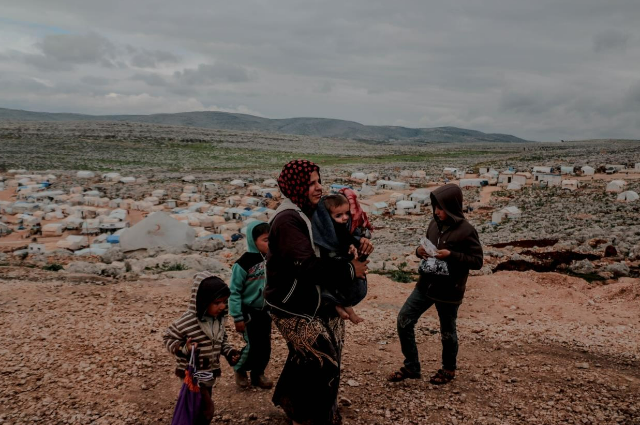
Photo by Ahmed akacha from Pexels
As we conclude, it is essential to emphasize that migration and refuge are enduring phenomena deeply rooted in human history. They are shaped by evolving geopolitical landscapes, socio-economic disparities, conflict, and environmental factors. It is incumbent upon us to approach these issues with empathy, compassion, and a commitment to human rights, recognizing the inherent dignity and worth of every person, regardless of their migration status. Ultimately, the management of migration and refuge requires a comprehensive and holistic approach that considers the interplay of legal, humanitarian, social, and economic dimensions. By working together, embracing diversity, and fostering inclusive societies, we can navigate the complexities of migration and refuge and strive towards a world that upholds the principles of justice, compassion, and solidarity for all individuals, regardless of their country of origin.
. . .
References:
- Betts, A., & Loescher, G. (Eds.). (2017). Refugees in International Relations. Oxford University Press.
- Hathaway, J. C. (2017). The Rights of Refugees under International Law. Cambridge University Press.
- Goodwin-Gill, G. S., & McAdam, J. (Eds.). (2007). The Refugee in International Law (3rd ed.). Oxford University Press.
- Simeon, J., & Krahn, H. (Eds.). (2011). In Search of Safety: Confronting
- Inequality in Women's Imprisonment. University of California Press.
- Van Selm, J., & Goshit, A. M. (Eds.). (2021). The Palgrave Handbook of Migration and Security. Palgrave Macmillan.
- Zimmermann, A., & Rosenblum, M. (Eds.). (2016). The Oxford Handbook of Citizenship. Oxford University Press.
- Aleinikoff, T. A., & Klusmeyer, D. (Eds.). (2003). From Migrants to Citizens: Membership in a Changing World. Carnegie Endowment for International Peace.
- Loescher, G., & Milner, J. (Eds.). (2008). Protracted Displacement in Asia: No Place to Call Home. Ashgate Publishing.
- Chetail, V. (2019). International Migration Law (2nd ed.). Oxford University Press.
- Feller, E., Türk, V., & Nicholson, F. (Eds.). (2003). Refugee Protection in International Law: UNHCR's Global Consultations on International Protection. Cambridge University Press.
